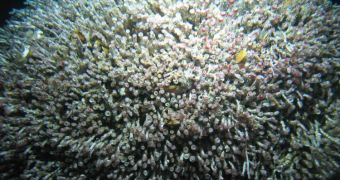A team of scientists from the Scripps Institution of Oceanography (SIO) in La Jolla, California, argues that hydrothermal vents and marine seeps can coexist in the same environment. The question as to whether or not that is the case has been a topic of discussion in the scientific community for a decade.
Many scientists thought it to be impossible. Hydrothermal vents are sea floor features located at great depth, deprived of sunlight, through which gases from the planetary mantle vent into the oceans.
About 10 years ago, when they were first discovered, investigators also found a large number of marine species living exclusively around the vents. These organisms, including complex animals, had evolved specifically to handle the hot, acidic conditions around the seafloor structures.
On the other hand, marine seeps are landscape features on the sea floor, in very cold regions of the ocean. This is where methane slowly rises from the planetary crust, and starts permeating the water.
As soon as the two were found, scientists began wondering whether the two can coexist in the same habitat or not. The answer, according to the new SIO investigation, appears to be positive. The data to attest this were collected during a recent submersible expedition, conducted off Costa Rica.
The ecosystem the group discovered is now called a hydrothermal seep, a term denoting the combination of hydrothermal vents and methane seeps. A paper detailing the work appears in the March 7 issue of the esteemed journal Proceedings of the Royal Society B: Biological Sciences.
The work was authored by SIO expert Lisa Levin. The Costa Rican site is amazing due to the “presence of vent-like and seep-like features together, a vast cover of tubeworms across large areas, and a wealth of new species,” she explains.
“The discovery shows that we still have much to learn about hydrothermal vents and methane seeps and about the vast depths of the oceans. We need to re-think the boundary, of where a vent begins or a seep ends,” David Garrison explains.
The expert holds an appointment as the director of the Biological Oceanography Program at the US National Science Foundation (NSF). The SIO investigation was funded through this program.
Levin is convinced that further studies of the oceans in general will reveal countless new species of animals, as well as ecosystems that we cannot currently even imagine. A decade ago, we had no idea vents and seeps even existed, but now we know that they can also live side-by-side.

 14 DAY TRIAL //
14 DAY TRIAL //